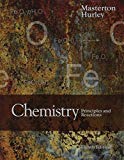
Concept explainers
There is a buffer system in blood
(a) Calculate the
(b) What percentage of the
(c) What percentage of the
(a)
Interpretation:
The ratio
Concept introduction:
Henderson-Hasselbalch equation is an equation useful to determine the pH of any solution when any acid’s aqueous solution is related to its acid dissociation constant.
Buffer equation is considered as an equation when ionization of a weak acid in the water occurs resulted into the hydronium ion and the conjugate base of that acid.
Answer to Problem 36QAP
The ratio
Explanation of Solution
For
For acid-dissociation constant of the given
For
Now, we need to determine the concentration of
In equation (1), we are substituting the value of
(b)
Interpretation:
The percentage
Concept introduction:
Henderson-Hasselbalch equation is an equation useful to determine the pH of any solution when any acid’s aqueous solution is related to its acid dissociation constant.
Buffer equation is considered as an equation when ionization of a weak acid in the water occurs resulted in the hydronium ion and the conjugate base of that acid.
Answer to Problem 36QAP
Explanation of Solution
The pH of the buffer system as 6.80and the ratio of the concentration of
Now, let us take the concentration of
We have the dissociation equation of
As per the Henderson-Hasselbalch equation,
Now, the percentage of
(c)
Interpretation:
The percentage
Concept introduction:
Henderson-Hasselbalch equation is an equation useful to determine the pH of any solution when any acid’s aqueous solution is related to its acid dissociation constant.
Buffer equation is considered as an equation when ionization of a weak acid in the water occurs resulted in the hydronium ion and the conjugated base of that acid.
Answer to Problem 36QAP
Explanation of Solution
We have the pH of the buffer system as 7.80 and the ratio of the concentration of
Now, let us take the concentration of
We have the dissociation equation of
As per the Henderson-Hasselbalch equation,
Now, the percentage of
Want to see more full solutions like this?
Chapter 14 Solutions
Bundle: Chemistry: Principles and Reactions, 8th, Loose-Leaf + OWLv2, 1 term (6 months) Printed Access Card
- Q1. (a) Draw equations for homolytic and heterolytic cleavages of the N-H bond in NH3. Use curved arrows to show the electron movement. (b) Draw equations for homolytic and heterolytic cleavages of the N-H bond in NH4*. Use curved arrows to show the electron movement.arrow_forwardWhich is NOT the typical size of a bacteria? 1000 nm 0.001 mm 0.01 mm 1 umarrow_forwardNonearrow_forward
- Show work. don't give Ai generated solutionarrow_forwardPart II. count the expected number of signals in the 1H-NMR spectrum of these compounds HO 0 одев * Cl -cl "D"arrow_forwardPart I. Create a splitting tree diagram to predict the multiplet pattern of proton Hb in the compound below: 3 (Assume that "Jab >>> ³JbC) Ha Hb He он Ha NH2 Ha HCarrow_forward
- SH 0 iq noitzouDarrow_forwardNonearrow_forward+ HCl →? Draw the molecule on the canvas by choosing buttons from the Tools (for bonas), Atoms and Advanced Template toolbars. The single bond is active by default. + M C + H± 2D EXP. CONT. K ? L 1 H₁₂C [1] A HCN O S CH3 CH 3 CI Br HC H₂ CH CH CH3 - P Farrow_forward
 Chemistry: The Molecular ScienceChemistryISBN:9781285199047Author:John W. Moore, Conrad L. StanitskiPublisher:Cengage Learning
Chemistry: The Molecular ScienceChemistryISBN:9781285199047Author:John W. Moore, Conrad L. StanitskiPublisher:Cengage Learning ChemistryChemistryISBN:9781305957404Author:Steven S. Zumdahl, Susan A. Zumdahl, Donald J. DeCostePublisher:Cengage Learning
ChemistryChemistryISBN:9781305957404Author:Steven S. Zumdahl, Susan A. Zumdahl, Donald J. DeCostePublisher:Cengage Learning Chemistry: An Atoms First ApproachChemistryISBN:9781305079243Author:Steven S. Zumdahl, Susan A. ZumdahlPublisher:Cengage Learning
Chemistry: An Atoms First ApproachChemistryISBN:9781305079243Author:Steven S. Zumdahl, Susan A. ZumdahlPublisher:Cengage Learning
 General Chemistry - Standalone book (MindTap Cour...ChemistryISBN:9781305580343Author:Steven D. Gammon, Ebbing, Darrell Ebbing, Steven D., Darrell; Gammon, Darrell Ebbing; Steven D. Gammon, Darrell D.; Gammon, Ebbing; Steven D. Gammon; DarrellPublisher:Cengage Learning
General Chemistry - Standalone book (MindTap Cour...ChemistryISBN:9781305580343Author:Steven D. Gammon, Ebbing, Darrell Ebbing, Steven D., Darrell; Gammon, Darrell Ebbing; Steven D. Gammon, Darrell D.; Gammon, Ebbing; Steven D. Gammon; DarrellPublisher:Cengage Learning Introduction to General, Organic and BiochemistryChemistryISBN:9781285869759Author:Frederick A. Bettelheim, William H. Brown, Mary K. Campbell, Shawn O. Farrell, Omar TorresPublisher:Cengage Learning
Introduction to General, Organic and BiochemistryChemistryISBN:9781285869759Author:Frederick A. Bettelheim, William H. Brown, Mary K. Campbell, Shawn O. Farrell, Omar TorresPublisher:Cengage Learning





